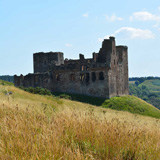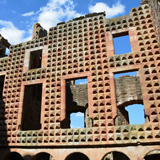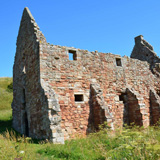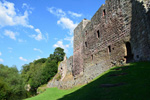History
Nestled among rolling hills and farmlands in Midlothian Scotland is Crichton Castle. John de Crichton was granted the barony from King Robert III around 1400. He is also recorded as attending the coronation of Robert II in 1371, and it is believed he may have built the first castle at Crichton that consisted of the tower house.
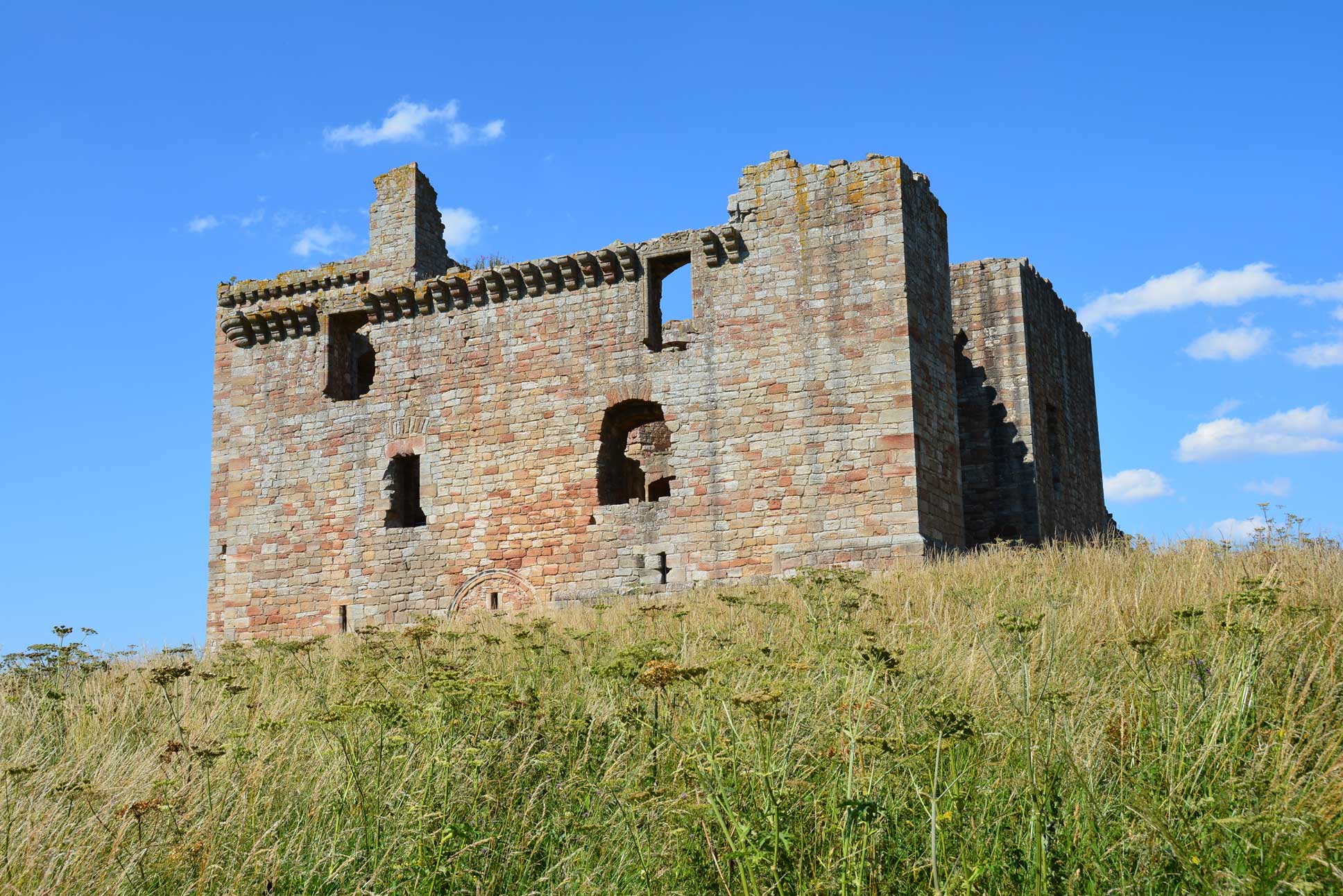
John's son, William Crichton, converted the tower house-style castle into a courtyard castle, which included the great hall. John increased the family fortunes as a trusted advisor to King James I, who made him Master of the King's Household and appointed him sheriff of Edinburgh and Keeper of Edinburgh Castle.
William Crichton was most famous for presiding over the Black Dinner of 1440 at Edinburgh Castle. He hosted the 6th Earl of Douglas and his brother at Crichton Castle on their way to Edinburgh for that infamous dinner. In 1444, the 8th Earl of Douglas sought revenge against William Crichton and used the Black Dinner as a pretext to attack William, besieged him in Edinburgh, and possibly attacked Crichton Castle, but shortly after surrendering, William was back on the king's council. He was created Lord Crichton in 1447 and regained the chancellorship in 1448. William Crichton was also present at Stirling when the 8th Earl of Douglas was murdered by King James II in 1452.
In 1483, the 3rd Lord Crichton, another William Crichton, forfeited his lands and titles, including Crichton Castle, after supporting Alexander Stewart in a failed plot to depose King James III. The castle was granted to Sir Joh Ramsey of Bothwell, who himself exited the castle in 1488.
Later, in 1488, King James IV granted Crichton Castle and Bothwell Castle to Patrick Hepburn, Lord Hailes, later 1st Earl of Bothwell, for his faithful loyalty, service, and obedience. The 2nd Earl of Bothwell died along with James IV at the Battle of Flodden in 1513.
James Hepburn, 4th Earl of Bothwell, supported Mary of Guise during the Scottish Reformation, which ignited assaults from James Hamilton, the Duke of Châtellerault, on Borthwick and Crichton Castles. Crichton Castle was besieged and captured on November 3rd, 1559, by the Duke's son, the Earl of Arran, who ransacked the castle and garrisoned it with 50 soldiers.
In January of 1562, Crichton Castle hosted the wedding of Lord John Stewart, half-brother of Mary Queen of Scots, and Jean Hepburn, Bothwell's sister. The queen spent a few nights at the castle. The 4th Earl Bothwell was later a suspect in the murder of Queen Mary's husband, Henry Stuart, Lord Darnley, in February 1567. Those suspicions grew stronger when Bothwell became Queen Mary's third husband in May of the same year. The 4th Earl and Queen Mary were met by an army raised by Twenty-Six Scottish Peers at Carberry Hill on June 15th, 1567, where Mary's forces dwindled during negotiations, and Mary and the Earl surrendered. Mary was taken to Lochleven Castle and held prisoner. James Hepburn, 4th Earl of Bothwell, was granted safe passage from the field and went into exile in Denmark, went insane, and died in prison there at Dragsholm Castle in 1578.
In 1568, Crichton Castle was granted to Francis Stewart, son of Mary's half-brother John and his wife Jean Hepburn. Francis was created 5th Earl of Bothwell in 1578 after the death of the 4th Earl in Denmark. Francis would build the Italian-influenced diamond façade in the north range of Crichton Castle after visiting Italy in 1582. Scotland's first scale-and-Platt stair (modern staircase with landings) and a drawing room north of the old tower house were also added to the castle. King James VI would visit Crichton Castle in 1586. Francis would be found guilty of treason, accused of trying to kill the king with witchcraft, in February of 1595 and was forced into exile, where he would later die in Naples.
Crichton Castle was no longer a noble residence after that and began a two-century decline into ruin. It became a quarry, where locals reused the stonework from the castle to build other buildings. Crichton Castle appeared in Walter Scott's epic poem Marmion in 1808, which generated interest in the castle as a romantic ruin. In 1926, Henry Burn Callander gave Crichton Castle into State care, which is cared for by Historic Scotland today.
Castle Highlights
Although a ruin today, Crichton Castle stands quietly and majestically among the isolated farmlands of the lowlands of Scotland. It comprises four contiguous buildings around an inner courtyard.
The tower house is the castle's oldest part, measuring 14 meters by 10 meters with walls 2 meters thick. A hall was on the tower's second floor, and the lord's private chambers were located above that on the third floor.
The great hall block is located along the castle's south side and included a machicolated parapet that projected out from the castle walls. Storage cellars were on the first floor, and the great hall was on the floor above.
The 5th Earl's Lodging was located in the north quarter and consisted of three stories and an attic. The courtyard façade of the north quarter, with its diamond stud pattern, is unique to Scotland.
The castle stable block is located outside the castle and has often been confused with a chapel. It has stalls on the ground floor and a hay loft above the stable to house staff.
Crichton Castle can be thoroughly explored in half a day. For a full day of visiting castles, Craigmillar Castle is only about 3 miles away, and Dirleton and Tantallon Castles are also located approximately 20-30 miles to the east.
Crichton Castle is also haunted.
